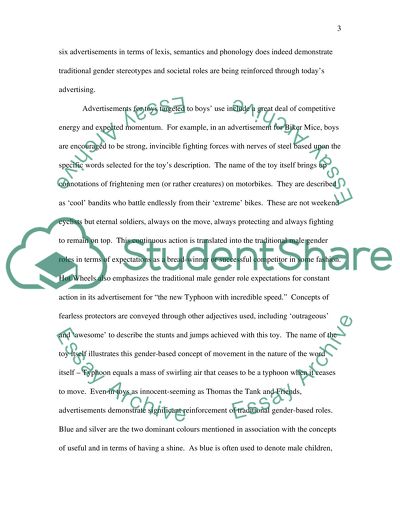Cite this document
(Language of Advertisement Case Study Example | Topics and Well Written Essays - 2411 words, n.d.)
Language of Advertisement Case Study Example | Topics and Well Written Essays - 2411 words. Retrieved from https://studentshare.org/media/1539656-language-investigation-investigating-the-difference-in-the-language-used-in-boys-and-girls-toys-televison-adverts
Language of Advertisement Case Study Example | Topics and Well Written Essays - 2411 words. Retrieved from https://studentshare.org/media/1539656-language-investigation-investigating-the-difference-in-the-language-used-in-boys-and-girls-toys-televison-adverts
(Language of Advertisement Case Study Example | Topics and Well Written Essays - 2411 Words)
Language of Advertisement Case Study Example | Topics and Well Written Essays - 2411 Words. https://studentshare.org/media/1539656-language-investigation-investigating-the-difference-in-the-language-used-in-boys-and-girls-toys-televison-adverts.
Language of Advertisement Case Study Example | Topics and Well Written Essays - 2411 Words. https://studentshare.org/media/1539656-language-investigation-investigating-the-difference-in-the-language-used-in-boys-and-girls-toys-televison-adverts.
“Language of Advertisement Case Study Example | Topics and Well Written Essays - 2411 Words”, n.d. https://studentshare.org/media/1539656-language-investigation-investigating-the-difference-in-the-language-used-in-boys-and-girls-toys-televison-adverts.


